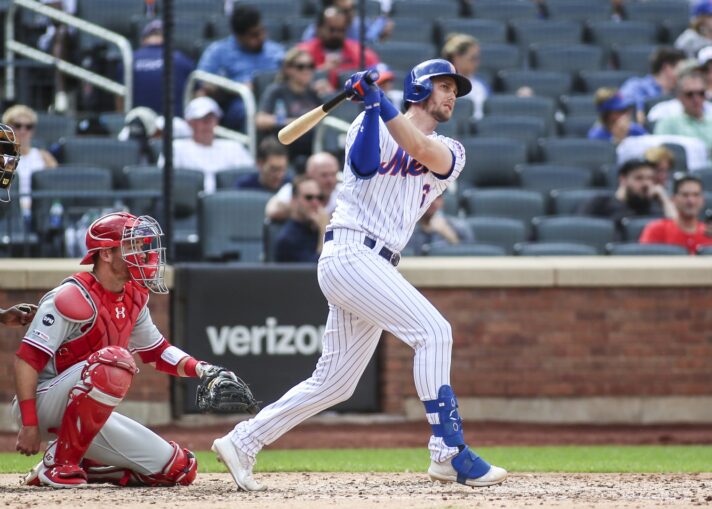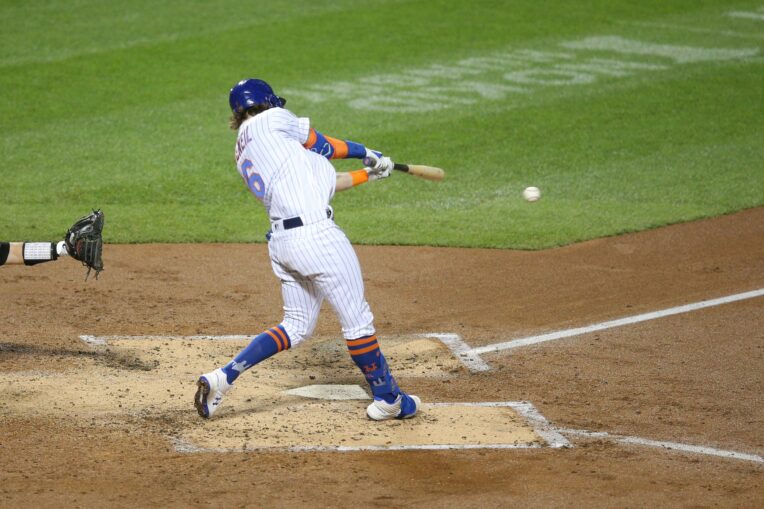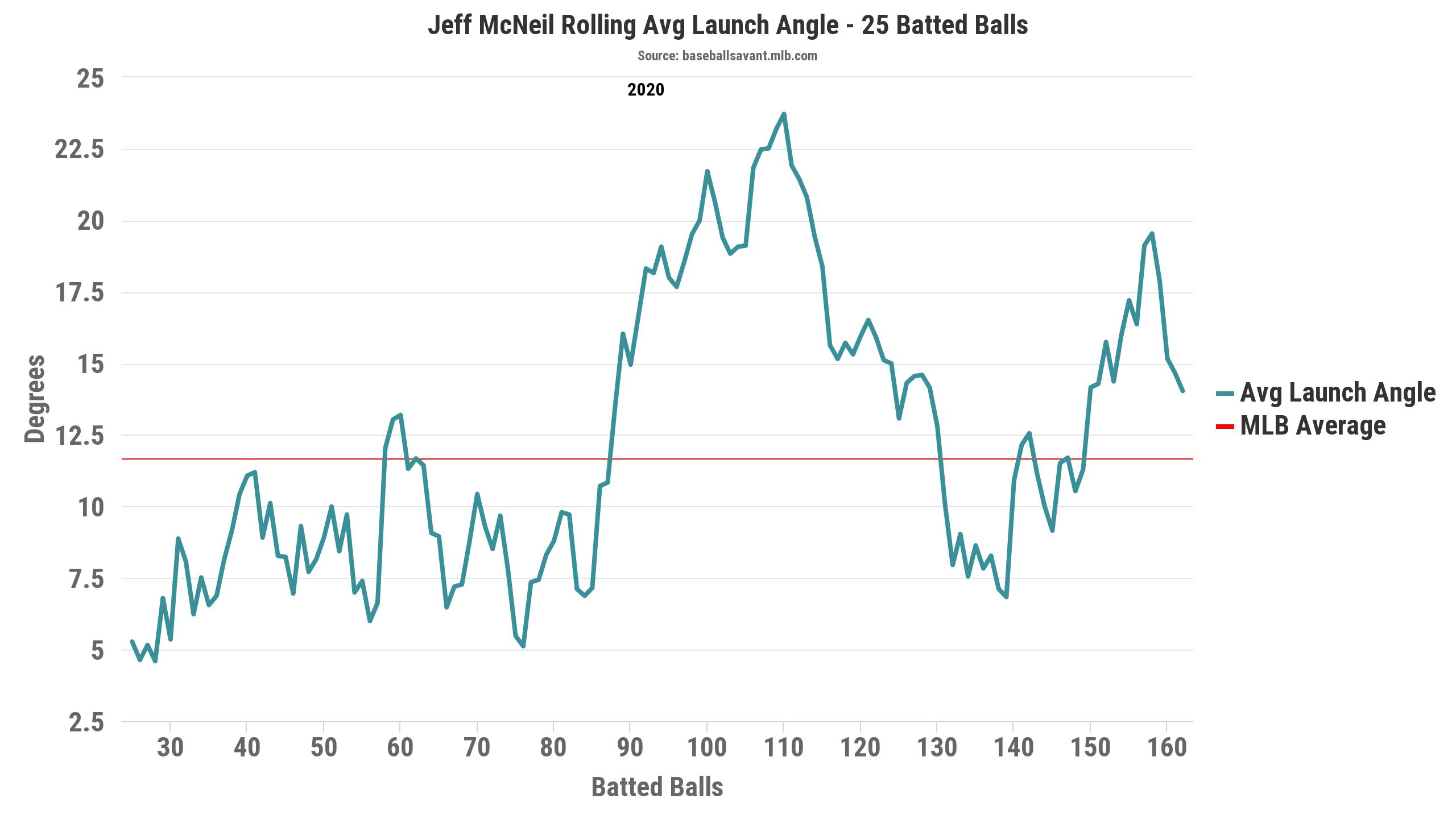
Last night, the New York Mets earned their first victory of the season behind a great pitching performance by Marcus Stroman and the eight runs they scored behind him. The Mets offense piled on all those runs, despite recording only five hits, as they relied on their plate discipline to draw walks and took advantage with some situational hitting.
There’s no question this team has even better days ahead of them, especially since they feature one of the top offenses in the majors. Along with the acquisition of shortstop Francisco Lindor, this explosive lineup also includes an extremely reliable contact hitter in Jeff McNeil, who’s looking to rebound following his rollercoaster 2020 season.
After enjoying a breakout performance in 2019, resulting in career-highs in home runs (23), RBIs (75), wRC+ (143) and fWAR (4.5), McNeil hit a major roadblock in his development last season as he was sidelined with several different injuries over the 60-game schedule.
In particular, the 28-year-old battled through a knee contusion, an intercostal strain, a gastrointestinal issue and some minor back stiffness, making his third season in the majors extremely frustrating.
Thanks to these injuries, the Mets’ versatile infielder fell flat out of the gate and failed to perform effectively through the first half of the summer. As a result, the left-hander produced just seven doubles, nine RBIs, a .075 ISO, a .309 BABIP, a .302 wOBA, an 8.4% walk rate, a 14.0% strikeout rate, a 25.9% LD rate, a 46.9% GB rate, a 27.2% FB rate, a 92 wRC+ score and a slashing line of .269/.336/.344/.681 through the first 28 games of the season.

Digging deeper into McNeil’s first-half struggles, the 2019 NL All-Star witnessed a major decline in his launch angle during that span, particularly against fastballs and breaking balls. After generating a 13.8-degree average launch angle in 2019, he saw that number drop down to just 7.4 degrees through the first half of last season, causing him to hit an increased amount of ground balls.
As for his performance against heaters, the former 12th-round selection didn’t create a launch angle higher than 10 degrees in July or August, resulting in a 40.5% GB rate against them. Enduring similar woes against curveballs and sliders, the 6′ 1″ second baseman recorded a zero-degree average launch angle in July and increased it up to 12 degrees in August, generating a 54.0% GB rate against those pitches in the first half.
But as the calendar changed to September, McNeil avoided any major injuries and stayed on the field through the final month of the shortened season, allowing him to dramatically improve his swing. Making some much-needed changes at the plate, the promising lefty increased his overall launch angle to 15.6 degrees through the final 24 games of the campaign – an adjustment that proved to be very rewarding.

Source: BaseballSavant.com
Over the final month of the regular season, McNeil earned 102 plate appearances and experienced a significant power surge, producing seven doubles, four home runs, 14 RBIs, a .211 ISO, a .364 BABIP, a .421 wOBA, a 10.8% walk rate, an 8.8% strikeout rate, a 22.2% LD rate, a 40.7% GB rate, 37.0% FB rate, a 171 wRC+ score and a scorching-hot slash line of .356/.431/.567/.998.
Taking this even further, the former top prospect performed much more effectively against fastballs in September, as he increased his average launch angle up to 19 degrees and raked against them all month long. Thanks to this adjustment, the veteran infielder created season-highs in AVG (.423), xAVG (.307), SLG (.673), xSLG (.486) and wOBA (.477).
While McNeil didn’t fare nearly as well against breaking balls in September, he made a similar adjustment by improving his launch angle up to 16 degrees, helping him salvage his season against curveballs and sliders. In turn, the California State product recorded season-highs in AVG (.174), xAVG (.230), SLG (.348), xSLG (.421) and wOBA (.289).
Based on McNeil’s strong finish from last season, there’s a good chance he’ll be able to carry his impressive results over into this season, especially since he’s fully healthy and wasn’t forced to experience two different versions of spring training.
Adding to this, the left-handed slugger is now aware, or at least he should be, of what it takes for him to perform up to his full potential at the plate, meaning it’ll be vital for him to keep his launch angle around 13-15 degrees.
If the former Roadrunner can achieve this goal, which he’s certainly capable of doing, his chances of replicating his stellar 2019 showing will likely increase dramatically. Even though he’s been positioned in the bottom half of the Mets’ lineup so far, the man who’s referred to as “Squirrel” should still receive plenty of run-scoring opportunities in the No. 6 spot, with multiple superstars batting in front of him.
With McNeil expected to spend the majority of his time at second base this season, where he generated a 1 OAA, -2 DRS, -0.5 RngR, -0.1 UZR and a 1.1 UZR/150 over 68 2/3 innings last season, there are plenty of question marks about whether he’ll remain at that position long-term. Despite the uncertainty regarding his defense, a bounce-back performance in the batter’s box could outweigh his production, or lack of it, in the infield.
Considering the California native, who’s earning $642,251 in 2021, will become eligible for arbitration for the first time in his career next winter, returning to his previous form might earn him a considerable raise in 2022. In addition, a strong performance could also potentially entice the front office to begin preliminary contract negotiations in the near future as he’s slated to hit free agency following the 2024 campaign.
With the Mets hoping to reach the playoffs for the first time since 2016, an offensive resurgence from McNeil could undoubtedly help this lineup become one of the most potent offenses throughout the majors, which could go a long way in ending their current postseason drought.















